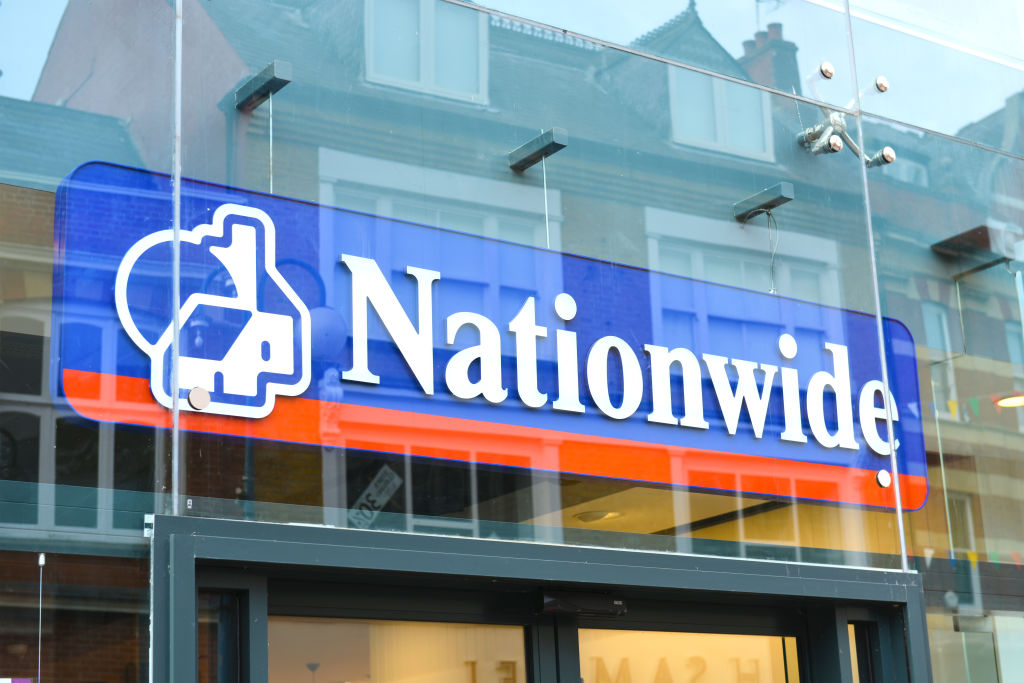Nationwide slashes best buy 8% regular saver- what's the next best rate?
Nationwide has dropped the rate on its long-standing top 8% regular saver. What are the next best savings rates on the market?

Vaishali Varu

This deal is no longer on the market. Please see our best regular savings guide for the latest rates.
Nationwide Building Society has been a favoured name in the savings market lately as it’s been one of the few high-street banks to beat the best savings accounts with its 8% regular saver.
But today (9 February), the building society dropped the rate on its flex regular saver from a market-leading 8% AER to 6.5%, after nearly five months on the market.
MoneyWeek
Subscribe to MoneyWeek today and get your first six magazine issues absolutely FREE

Sign up to Money Morning
Don't miss the latest investment and personal finances news, market analysis, plus money-saving tips with our free twice-daily newsletter
Don't miss the latest investment and personal finances news, market analysis, plus money-saving tips with our free twice-daily newsletter
The fall comes amid the Bank of England (BoE) freezing the base rate for the fourth time at 5.25%.
We have already witnessed rates falling on the best one-year fixed savings accounts and easy-access accounts. Metro Bank pulled its top 5.22% fixed rate in January and the challenger later dropped the rate on its easy-access saver too in early February below 5%.
Find out if we expect rates on the best regular savings accounts to fall further and what the top deals are on the market right now.
Nationwide drops best buy regular saver rate
Nationwide launched its market-leading 8% regular saver on 21 September 2023, which followed on from its previous flex issue offering 4.5% AER back in October 2022.
The account permitted you to save between £1 and £200 per month, and unlike a lot of other regular savers, this one required no minimum monthly payment.
The 8% rate coincided with Nationwide’s top paying £200 bank switching bonus. Although this is no longer on the market, the bank’s handsome incentive encouraged more people to switch to them to take advantage of the best buy 8% saver.
Nationwide also became one of the few high-street banks to outpace the Bank of England's 5.25% base rate, and kept its rate on the market through four interest rate freezes.
But after five months on the market, Nationwide’s 8% rate suddenly plummeted its rate to 6.5% AER.
Whilst regular savings accounts have fallen at a steadier rate compared to easy-access savings accounts and one-year fixed deals, this could be a sign that the latest interest rate freeze is starting to affect more savings deals.
MoneyWeek has been tracking the best regular savings accounts and has only seen three accounts drop in rate so far in 2024.
That compares with seven easy-access savings providers dropping their rates and 40 one-year fixed deals falling between the previous interest rate freeze on 14 December and the most current MPC meeting on 1 February.
What can I earn on a regular savings account now?
Currently, you can earn 7% AER on the top regular savings account offered by HSBC’s sister lender First Direct. It’s been the longest-standing deal on our best buy guide, and you can save between £25 to £300 per month.
Although that’s a slight drop from Nationwide’s 8% rate, it’s not a bad move if you want to earn a top rate that beats the BoE’s base rate and the current rate of inflation (at 4%).
Plus, your cash would be held with a reputable lender.
Provided that you save £300 each month for 12 months, you would earn £136.50 in interest which would be paid at the end of your annual term.
Skipton Building Society (BS) is also paying savers 7% AER on its regular saver, but it is quite restricted. You must have been a Skipton BS customer before 11 January 2024 to take advantage of the saver.
A regular savings account is great for those who are looking for the top rates on the savings market and don’t need access to their cash for a year or so. But you should know that with the more desirable rates comes a price- more caveats.
If you’re opening a regular savings account, you should check if you need to be an existing customer at the bank and if you can afford its minimum monthly payments.
Also, check that up to £85,000 of your cash is protected by the Financial Services Compensation Scheme.
If there are too many conditions but you are still looking for an attractive rate, you could be better off with a fixed savings account.
And if you prefer flexibility, an easy-access saver might be the best option.
What are the best savings rates on the market right now?
As of recent, savings providers have been dropping their rates, but you can still earn more than 5% on the top accounts. Here are your options.
| Type of account | Provider | Rate AER | Minimum deposit |
| Easy-access savings | Cahoot | 5.2% | £1 |
| One-year fixed bond | Shawbrook Bank | 5.16% | £1,000 |
| Regular savings account | First Direct | 7% | £1 |
| Notice account | Vanquis Bank | 5.5% | £1,000 |
Historically, you earn a better rate when you fix your savings compared to an easy-access account. But as it stands, Cahoot’s easy-access saver pays more than the top one-year fixed deal.
That said, easy-access rates are variable, which means the rate could change at anytime. Whereas if you fix in the near future for let’s say a year, then you are guaranteed that return for one year.
Get the latest financial news, insights and expert analysis from our award-winning MoneyWeek team, to help you understand what really matters when it comes to your finances.

Oojal has a background in consumer journalism and is interested in helping people make the most of their money.
Oojal has an MA in international journalism from Cardiff University, and before joining MoneyWeek, she worked for Look After My Bills, a personal finance website, where she covered guides on household bills and money-saving deals.
Her bylines can be found on Newsquest, Voice.Cymru, DIVA and Sony Music, and she has explored subjects ranging from politics and LGBTQIA+ issues to food and entertainment.
Outside of work, Oojal enjoys travelling, going to the movies and learning Spanish with a little green owl.
-
 Investors will reap long-term rewards from UK equities
Investors will reap long-term rewards from UK equitiesOpinion Nick Train, portfolio manager, Finsbury Growth & Income Trust, highlights three UK equities where he’d put his money
-
 The graphene revolution is progressing slowly but surely
The graphene revolution is progressing slowly but surelyEnthusiasts thought the discovery that graphene, a form of carbon, could be extracted from graphite would change the world. They might've been early, not wrong.